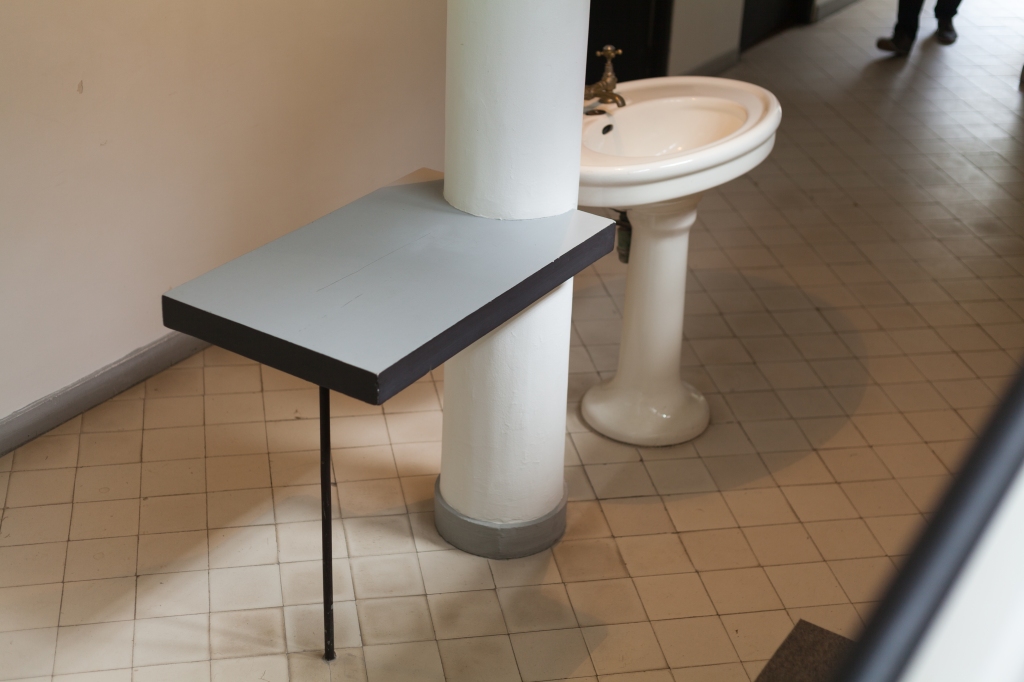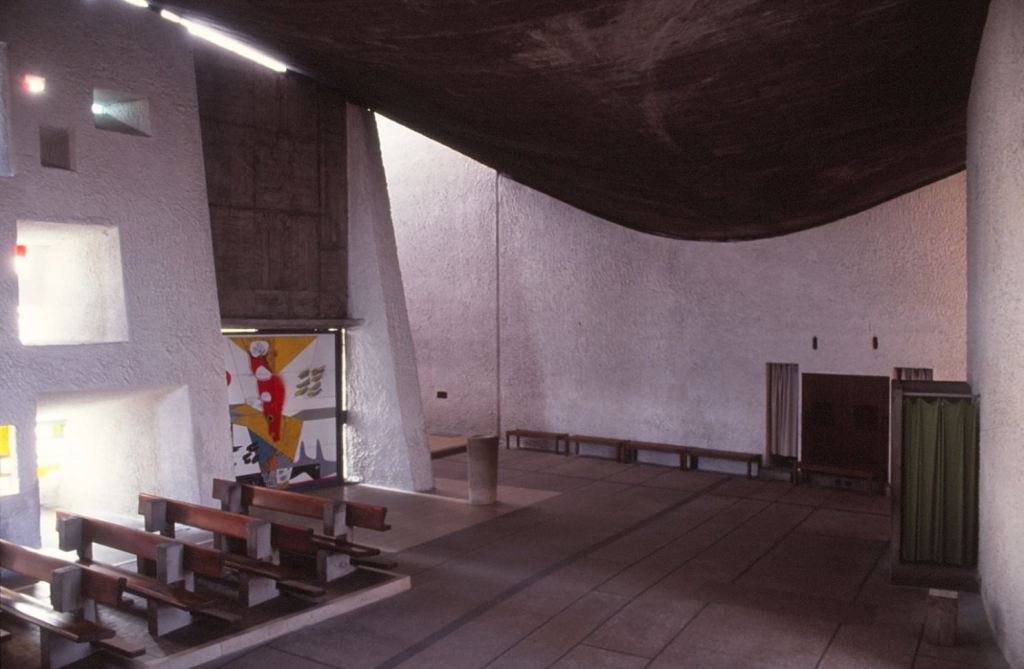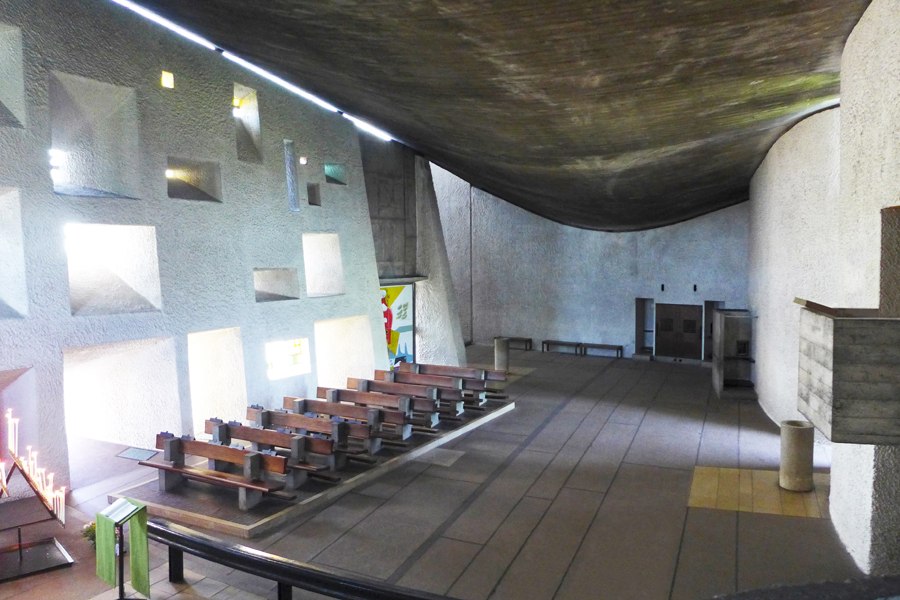In my previous posts of this series – links HERE, HERE, HERE, HERE, HERE, HERE, HERE, and HERE – I was telling a story. It is a story about stories, in that it was prompted by three French journalists telling us a story – namely, that the famous 20th century architect Le Corbusier was a Fascist. It is a personal story, in that I am repulsed by fascism but love Le Corbusier. It is a geo-political story, in that Corbusier was born and raised, quite actually, right in the middle space between French cosmopolitanism and German Nationalism. It is also, of course, a story, about Le Corbusier and his work. To tell that story was to tell multiple “stories within a story,” which hopefully began to give a sense of why this blog series carries its title.
In my last post – “Well, Yes, But…” (HERE) – I more directly addressed the question of whether, as the “secular liberal” journalists have claimed, Le Corbusier was indeed a Fascist. In the end, we see that Le Corbusier and his work, like most anything else in the hands of either side of the political aisle, are, when in their grasp, turned into territory to compete over for power and control. What if part of the point of Le Corbusier’s work is to point us toward that fact?
ASSERTIONS OR OBSERVATIONS?
What if Corbusier’s primary purpose into which he put his energy – namely, his work – wasn’t, in the first place, about making an ideological commitment? Of course, that isn’t to say that he had no private ideological leanings, but what if one of the lessons he teaches us is that ideology and politics are two things to be distinguished?

In “The Ground of The Question” (HERE), we see that the ground upon which our way of life stands or falls is a political one, but Corbusier’s work appears to simply, first and foremost, present before us the image of the “ground” of our very perception. His early work surely asserted his desire and a social need for “progress,” which was something to which he put his mind and hand. As discussed previously, however, even then, he was taking up an element of the modern environment into which he was immersed at birth.
The question of whether our dwelling place is globe and universe as compared to earth and horizon is surely a political one, but did Corbusier’s engagement with that question – explored in “Moving Around The Question” (HERE) – constitute political activism? As soon as his early work begins to give an easy answer, his later work changes its tune. In the end, we are presented with the fact of playful relationship that’s built into our history between horizon and globe (see “The Land Where The Question Is Heard”, HERE, and “The Mystery of The Question,” HERE).
Our embodied, relational response with the conditions of our environment is surely also a political question. Corbusier definitively started from a position of the body’s importance – see “The Body of The Question” (HERE) – but did the image of the dead body and sensual vitality constitute the hopeful vote of a political activist, or, rather more of a playfully poetic picture of the question of the body in modern life in the first place?
Most obviously, the question of governance and regulation discussed in “The Governance of The Question” (HERE) is a political one. And, surely, Corbusier took a stance against “the gas-bags” who consider themselves “free poets.” But was this reconciliation with the reality of the natural laws and limits of embodied existence or an obstinate stance against freedom? And, speaking of our compulsive cries for freedom, our question of constructing the bureaucratic machine is self-evidently a political one. But was Corbusier’s image of the house as “a machine for living” – as presented in “The Mechanics of The Question” (HERE) – an ideological assertion or a reconciliation with the conditions of his modern environment?
In “The Structure of The Question” (HERE), we have seen that Le Corbusier leaned into some antagonisms with the capriciousness of capitalist developers, with the petrification of architectural institutions of learning, and with futile bourgeoisie frivolities. But we have seen that and how his image of structures “held together in tension” also function as poetic presentations of the political, epistemic, and anthropological realities in which we are immersed.
PLAYFULNESS
Bear in mind that the circle was – for an ancient person standing like St. Catherine’s Monastery upon the earth – an element of sacred geometric symbolism for the relationship between heaven and said earth. As discussed previously in “Moving Around the Question” (HERE), the ellipse was a sign of what it means to live on a globe in the universe rather than upon earth and inside horizon. If all of these moves discussed above that Le Corbusier made in his work constituted ideological assertions, then why the obvious and conscious playfulness between circle and ellipse at, for example, Villa Savoy’s water fountain, as seen above?
If that cylindrical base was merely an obvious, coincidental, and logical choice for the base of that fountain, then what was going on at this baptismal fountain at his Chapel of Notre-Dame du Haut at Ronchamp? Just like at Villa Savoye, the base is cylindrical, and then it eventually moves up into an ellipse at the head. And yet, as compared to the fountain at Villa Savoye, it appears and reads very differently to the body’s senses and perceptions. He seems to have been making conscious design decisions about it.

And, if Corbusier wanted to assert what “should be,” and if he wanted to give his ideological allegiance to past or future, progressives or conservatives, earth or universe, then why is he seen, in both his early and late work, playfully presenting relationships between elements of the two? Why do we see him simply presenting the two at play with one another? Why is the other baptismal fountain at the opposite entrance of the chapel exactly reversed in relation to the first? It’s difficult to discern at the angle from which the following photograph is taken, but the second fountain at Ronchamp starts as an ellipse at the bottom and then works its way up into a cylindrical shape at its head.
If Le Corbusier was making political assertions with his life’s work, then why such conscious playfulness as with these fountains? If his architectural language was intended to follow ideological commitments of one variety or another, why would he have been willing for his work to change so drastically between early and late periods? Why did he switch allegiances between Apollo and Dionysius? Why did he go from building upon the grounds of avant-garde optimism and progress to embracing what might be considered “conservative,” religious mystery and “building upon” the land? And why did they so consciously appear to be at play with one another all along?
PRESENTATION OF ENVIRONMENTAL CONDITIONS
I would like to suggest that the very things Corbusier is doing in his work most readily lend themselves to being marked as territory over which opposed idealogues make competing claims. What he was doing and how this occurs is not at the level of discourse or political rhetoric. What’s happening here, rather, registers at a visceral level. Why is this the case? How does this happen? The language of Architecture is not the language of ideology. And, for that very reason, Architecture can teach us lessons about our politics that might otherwise, without good buildings, be more difficult to access.
In order to say more clearly what I mean, I need to step back to the beginning. Again, what I am doing here is telling a story. Every story has a setting. Both sides of the political aisle live inside a common environment with a common set of conditions. Architecture is a unique means of exploring this fact, because its history and present tell our collective story. Not just Corbusier but Architecture itself, by its very nature, does not speak the language of political rhetoric. Both sides of the political aisle inhabit and craft the space of our common architectural heritage. And, in this way, architecture is, at a visceral level, a kind of analogy to the common larger environment that we all inhabit. And, we shape our environment. It, in turn, shapes us.
Le Corbusier’s work illuminates these facts in a particular way. In what way does his work do this? We could say that his work presents our common environmental conditions in the particular ways that we have discussed in the “stories within the story” explored in previous posts. We all live in an environment that shapes us to live inside a play among the very things revealed and articulated in Le Corbusier’s work. We are all responding to our common environmental conditions in various ways that said environment presents to us as options in the first place.

Pingback: WAS LE CORBUSIER A FASCIST? Our Current Common Conditions | Knowing God
Pingback: WAS LE CORBUSIER A FASCIST? Conclusion and Index | Knowing God